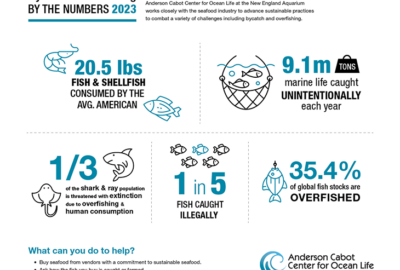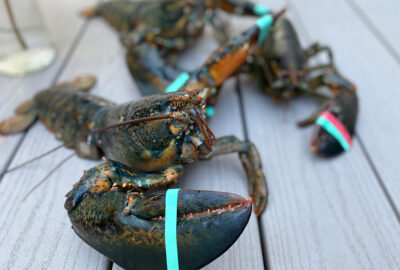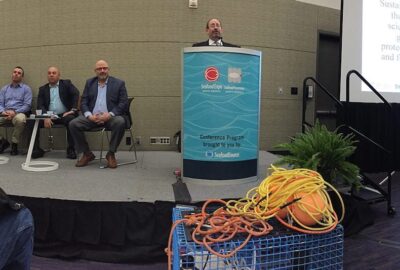Using Computer Models to Help Solve the Right Whale Entanglement Problem
By New England Aquarium on Friday, November 23, 2018

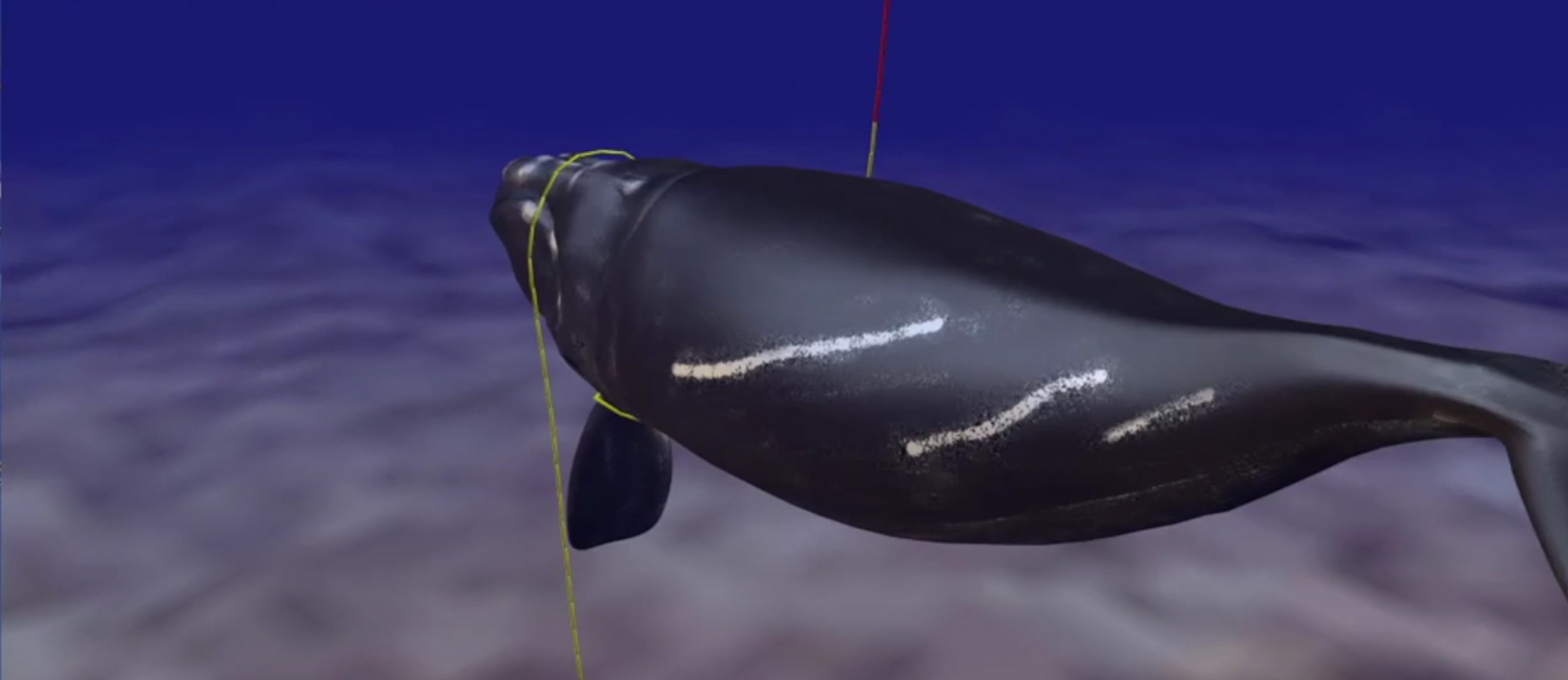
The numbers aren’t pretty: 83 percent of endangered North Atlantic right whales show signs of entanglement and 59 percent have been entangled more than once. These interactions with fishing gear are now the principle threat to the survival of this species, which now numbers only an estimated 411 individuals. Scientists know whales are getting entangled, however there’s very little known about the actual moment when they get snarled in ropes. Knowing how whales become entangled can help identify changes to fishing gear that an prevent entanglements.
“We don’t have a lot of observations. In fact, we have almost none of how whales get entangled in ropes,” said Dr. Tim Werner, Senior Scientist at the New England Aquarium’s Anderson Cabot Center. “If we can see how they get entangled, it would help us prevent it. The technology in computers has evolved to a state where we can model these things.”
Enter the Virtual Whale Entanglement Simulator (VWES). A collaboration between Bellequant Engineering, Duke University, and the Anderson Cabot Center for Ocean Life at the New England Aquarium, the simulator is a graphic model that uses and records actual physical properties of ropes and other components. It lets a user directly control a whale’s movement, giving scientists the ability to test different whale behaviors to see how the animal moves and reacts in encounters with different fishing gear configurations. A paper on the simulation was published on November 19, 2018, in the journal Marine Mammal Science.
Cost, time constraints, and risk to animals mean testing new or modified gear in the field with North Atlantic right whales is infeasible. But with VWES, scientists can select different properties of ropes, including aspects like breaking strength and flotation, to test gear modifications in a virtual environment.
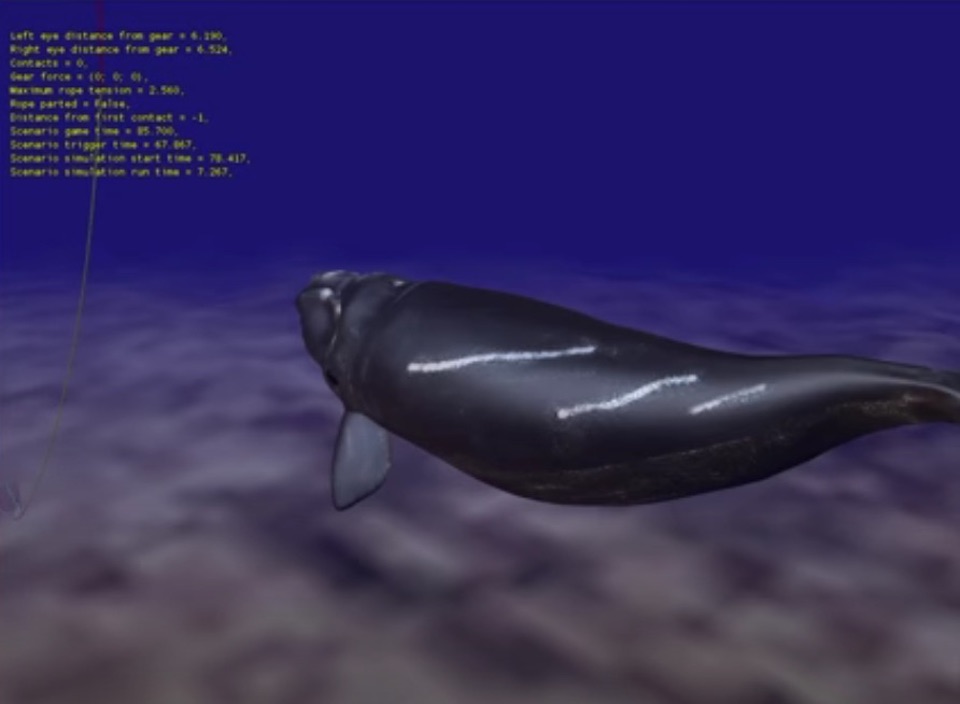
Simulation: Right Whale Entanglement Event
Courtesy Howle et al 2018.
“We can’t test new gear on whales. There aren’t enough of them, we wouldn’t purposely want to see them get entangled,” said Werner, who is also the Director of the Consortium for Wildlife Bycatch Reduction. “And it would take decades to amass enough data points to see if it’s working or not.”
The right whales don’t have decades. Scientists estimate that there are only 411 North Atlantic right whales left alive today. Of those, fewer than 100 are females of breeding age. Entanglements can stress these already endangered animals to the breaking point. When gear is wrapped in a whale’s mouth, it can prevent the animal from feeding. Trailing gear increases drag as a whale swims, which means it requires extra energy just to exist every day. According to Anderson Cabot Center scientists, only a third of female whales that are severely entangled survive and those that do survive the experience are less likely to have calves.
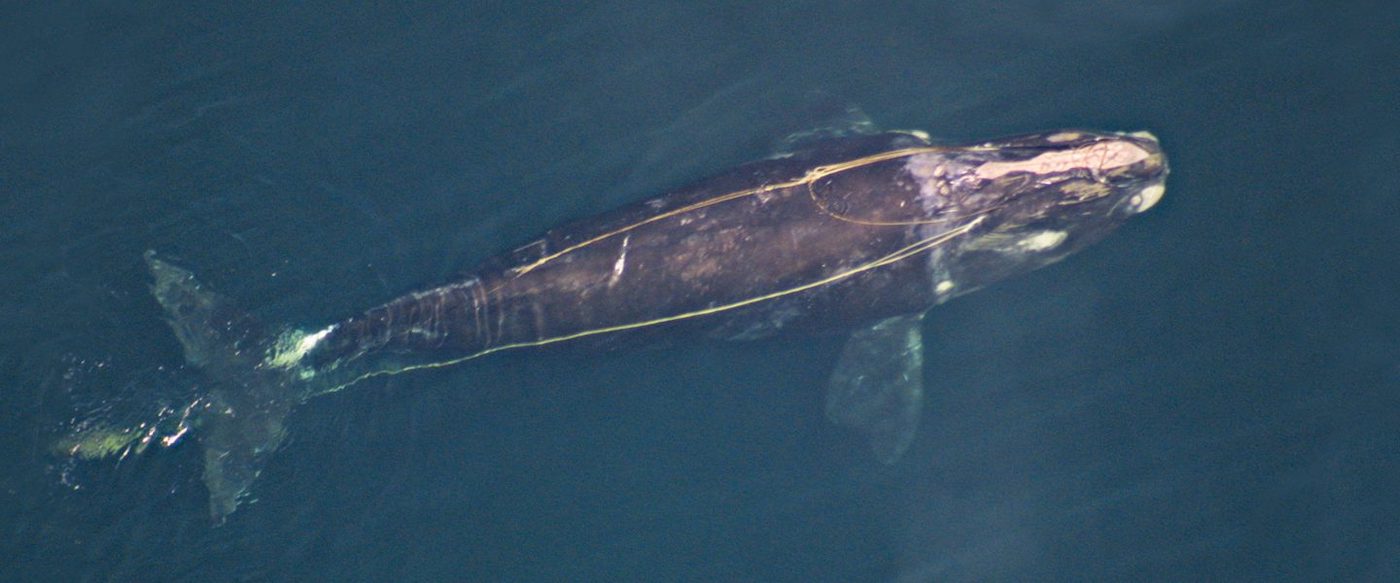
Different entanglement scenarios affect a whale in different ways. That’s where VWES comes in.
“It becomes a tool where you can reverse-engineer entanglements,” said Werner. If you can recreate the way the rope wraps around the animal in the model, you can figure out how to change the gear to reduce the risk of entanglement all together.
Using the simulation, scientists were able to recreate the rope configurations similar to those observed from actual entanglement case studies. They manipulated whale behaviors when colliding with buoy lines. For example, whales have been observed rolling after interacting with fishing ropes. “Interestingly, the possibly instinctual reaction of rolling away from the rope was shown to increase the probability that the whale would become entangled,” said the paper.
According to lead author Lars Howle, Ph.D., of Duke University and BelleQuant Engineering PLLC, the most challenging portion of the work was programming a model that was both fast enough to use in real time and accurate enough to use for scientific modeling purposes.
“While it is not particularly difficult to program a rope model that is either accurate or fast, programming a rope model that is both fast and accurate enough to be used in a real-time simulation has challenges,” said Howle.
The tool isn’t limited to right whales. In the future, Werner said he hopes to branch out to other whale species and even leatherback sea turtles.
“For the first time, we have a tool that takes us beyond mere conjecture; one in which we can use an evidence-based approach to evaluate the relative bycatch reduction risk of different fishing gear that needs to be safer for whales but practical for fishermen,” said Werner.
This simulation is only one aspect of Werner’s work to understand—and help end—right whale entanglement. Thanks to a recent federal grant of $226,000, Werner and his team will partner with lobstermen in the Gulf of Maine to test a type of “ropeless” gear that replaces vertical rope lines in the water column with a large floating spool. Ropeless fishing is one of several innovative solutions being advanced by the Global Bycatch Reduction team at the New England Aquarium’s Anderson Cabot Center.

